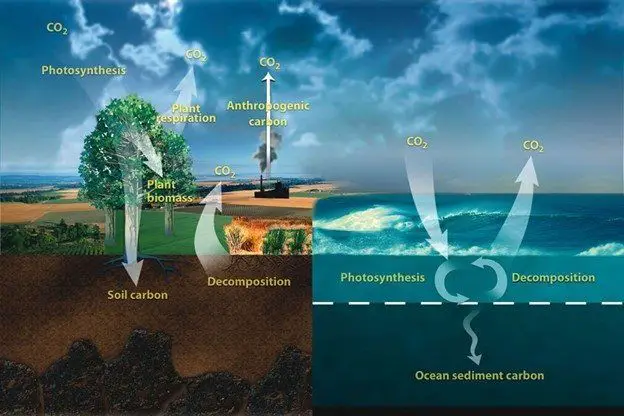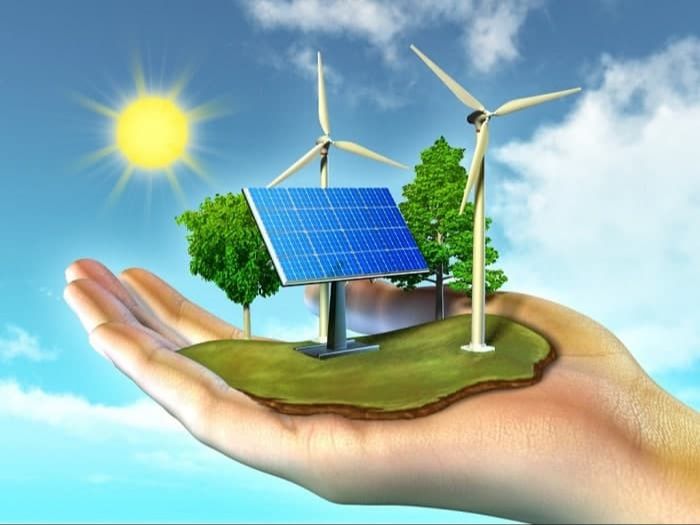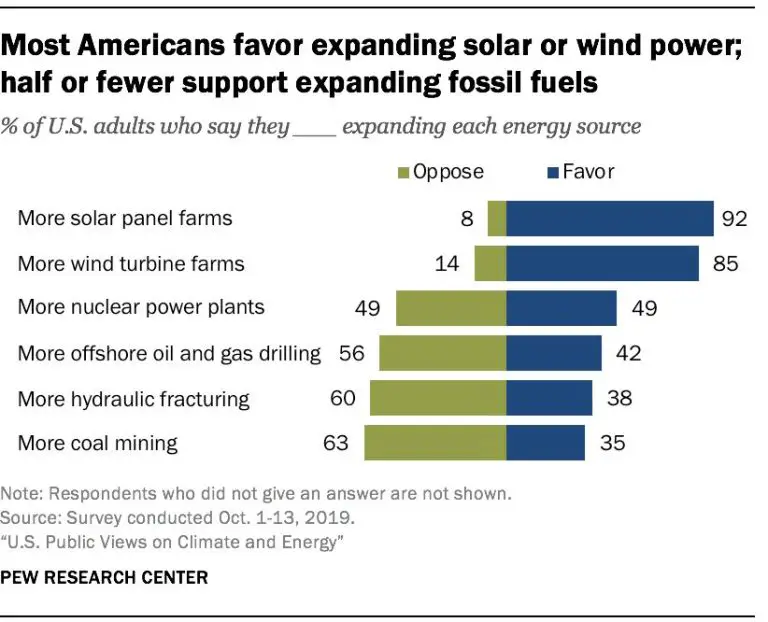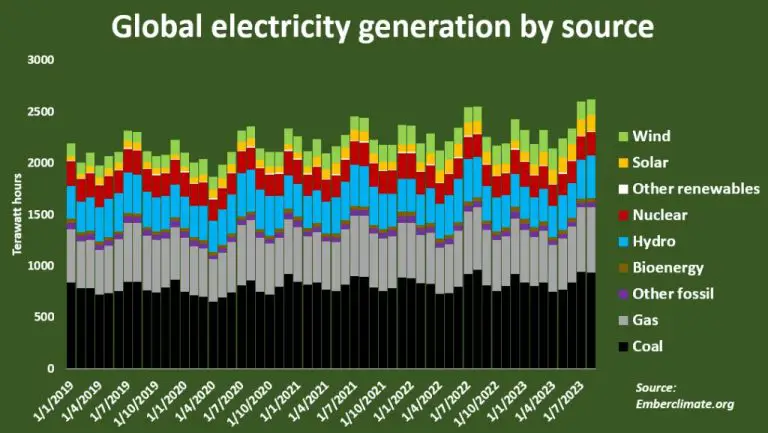Is Renewable Energy Unlimited True Or False?
Renewable energy sources like solar, wind, hydropower and geothermal offer a promising path for meeting the world’s energy needs in a sustainable way. Some claim that renewable energy has unlimited potential. But is this really true? In this article, we’ll examine the facts around renewable energy capacity and limitations. Our thesis is that while renewable energy is not unlimited, it can meet a substantial portion of energy demand in a sustainable manner if intelligently harnessed and integrated into the global energy system.
Definitions
Renewable energy is energy generated from sources that are continually replenished by nature and are considered inexhaustible, unlike fossil fuels which take millions of years to form and are finite resources. The most common types of renewable energy are:
- Solar energy – Energy from the sun that is converted into thermal or electrical energy. Common solar technologies include solar photovoltaics (solar panels) that convert sunlight into electricity and solar thermal systems that heat water.
- Wind energy – Kinetic energy from airflow that is converted into mechanical or electrical energy with wind turbines.
- Hydropower – Potential energy from flowing water that is converted into electricity with hydroelectric dams or turbines.
- Geothermal energy – Heat energy generated and stored in the Earth that is extracted for direct use or electricity generation.
Other renewable sources include bioenergy from plant material, wave and tidal energy from the oceans, and hydrogen derived from renewable resources. Renewable energy provides sustainable alternatives to power the world with reduced pollution and carbon emissions compared to fossil fuels.
Global Renewable Energy Potential
Several studies have estimated the total potential from renewable energy sources globally. According to the Global Atlas by the International Renewable Energy Agency (IRENA), the theoretical potential from all renewable sources exceeds current global energy demand by a significant margin. In practical terms, they estimate renewables could provide over 2,500 exajoules (EJ) per year, compared to total primary energy supply today of around 600 EJ. The technical potential is estimated at above 1,500 EJ per year if considering only proven technologies and applications.
Solar and wind have tremendous potential that vastly exceeds current demand. The report estimates 139,000 EJ from solar photovoltaics (PV) alone when considering rooftops, facades and infrastructure. Wind power could provide around 400,000 EJ per year. Other major sources include bioenergy (50,000 EJ), hydropower (50,000 EJ) and geothermal energy (5,000 EJ).
Overall, studies suggest renewable energy sources have the technical potential to meet global energy needs at least several times over. However, there are limitations and constraints that determine how much can be practically achieved.
Growth of Renewable Energy
The growth of renewable energy capacity has increased rapidly over the past decade. According to the International Energy Agency (IEA), renewable energy sources accounted for over 42% of global electricity generation in 2028, with the share of wind and solar PV doubling to 25% (IEA). Our World In Data reports that globally, almost one-third of electricity comes from renewables as of 2024, up from 24% in 2015 (Our World In Data).
The growth is expected to continue, with Statista forecasting an annual growth rate of 3.88% for renewable energy worldwide from 2024-2028 (Statista). Key drivers of this growth include improving technology and falling costs, particularly for solar and wind, as well as supportive government policies and corporate procurement. The growth of electric vehicles is also boosting renewable electricity demand. Challenges remain, including policy and regulatory uncertainty in some markets, and integrating high shares of variable renewables into power systems, but the overall trajectory is upward.
Limits and Constraints
While renewable energy has great potential, there are some inherent limits and constraints to consider. Three major challenges are intermittency, storage, and transmission.
Intermittency refers to the fact that renewable sources like solar and wind are variable and weather-dependent. The sun doesn’t always shine and the wind doesn’t always blow, so these sources provide inconsistent power generation (The Limits to Green Energy, Bonifas 2022). This intermittency requires backup power sources like natural gas or energy storage to fill in the gaps.
Energy storage like batteries can help address intermittency, but currently remains expensive and limited in capacity. Most renewable energy is used when it is generated rather than stored (Report: The limits to renewable energy, Sweco Group 2022). Advancements in storage technology could help overcome this barrier.
Transmission infrastructure also poses a challenge. Many prime renewable energy sites are located far from population centers. Massive investments in high-voltage transmission lines are needed to deliver renewable power (Barriers to Renewable Energy Technologies, Union of Concerned Scientists 2014). Upgrading grids for long-distance transmission is costly and complex.
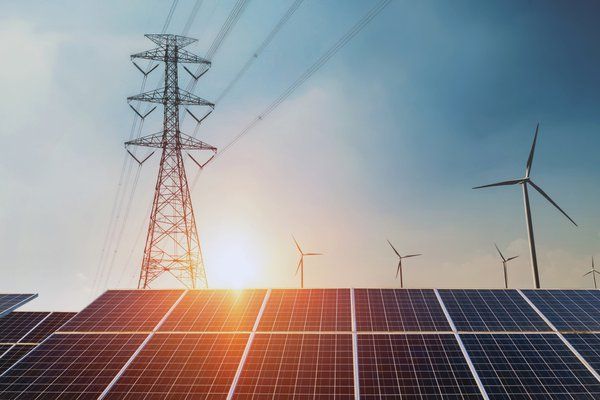
Role of Energy Efficiency
Reducing overall energy consumption through efficiency is a critical component of increasing renewable energy’s share of total energy use. As the Office of Energy Efficiency and Renewable Energy states, “Using less energy to provide the same service dramatically cuts total costs and reduces pollution.” Energy efficiency measures like weatherization, high-efficiency appliances, lighting upgrades, and smart building controls can significantly lower energy demand. With lower demand, the available renewable energy supply can meet a larger portion of total needs.
The NRDC notes the synergistic relationship between energy efficiency and renewable energy: “The cleanest, cheapest energy is the energy we don’t use in the first place. Investing in energy efficiency keeps our homes, buildings and factories humming along while reducing our electric bills and avoiding pollution.” Efficiency makes renewable energy penetration easier to achieve by lowering the total amount of energy generation required. Pursuing both renewables and efficiency is key for transitioning away from fossil fuels.
Comparisons to Fossil Fuels
Fossil fuels like oil, gas, and coal are finite resources that are being depleted much faster than they are being replenished. Renewable energy sources like solar, wind, and hydropower rely on infinite natural processes and do not face the same depletion concerns. According to a Pew Research study, while renewable energy is growing fast in the U.S., fossil fuels still dominated 78% of total energy consumption in 2019. However, renewable energy only accounted for 11% of energy consumption that same year (source).
Unlike fossil fuels, most renewable energy sources produce little to no global warming emissions. According to Inspire Clean Energy, renewable energy sources like solar and wind are much cleaner alternatives to fossil fuels. While both renewable energy and fossil fuels require resource extraction for materials and land use, renewable energy facilities can be decommissioned and recycled at end-of-life unlike depleted fossil fuel reserves (source).
Public Perception
There are some common misconceptions among the public about the limits of renewable energy. According to a 2020 study Exploring public perceptions of renewable energy, many believe that renewable sources like solar and wind are too intermittent or unreliable to meet energy demands. However, technological advances and grid integration methods can help overcome these issues.
Some also think renewable capacity is inherently limited, overlooking the vast global potential from sources like solar, wind, geothermal and more. With far greater amounts available than global energy needs, perceptions of scarcity are inaccurate. However, some geographic mismatches between renewable resources and energy demand exist.
Additionally, there is a misconception that the land use requirements of renewables impose an insurmountable limit. But innovations like floating solar, offshore wind, and rooftop solar allow integration in developed areas. While some land use constraints exist, perceptions often overestimate these barriers.
Policy Support
Governments play a crucial role in accelerating the adoption of renewable energy through effective policies and regulations (Policies and Programs). There are various ways that governments at the national, state, and local levels can enable further renewable energy deployment:
Setting renewable energy targets – Many governments have renewable portfolio standards that require a certain percentage of energy to come from renewable sources by a target year. These targets create demand and incentivize growth in the renewable energy industry. For example, the European Union has set a target for 32% of energy to come from renewables by 2030 (EPA).
Financial incentives – Tax credits, rebates, and feed-in tariffs can make renewable energy more financially attractive. These incentives help overcome cost barriers to adoption. Many countries use such mechanisms to stimulate investment in renewable energy projects.
Streamlined regulations – Cutting red tape surrounding permitting, grid interconnections, and land use makes development easier for renewable energy companies. Regulations should be optimized to enable responsible renewable energy expansion.
Phase-out fossil fuel subsidies – Ending subsidies for fossil fuels helps level the playing field for renewable energy to compete on price. The International Energy Agency recommends phasing out fossil fuel subsidies that encourage wasteful consumption (IEA).
Carbon pricing – Putting a price on carbon emissions through a carbon tax or cap-and-trade system reflects the environmental cost and further improves the economics of low-carbon renewable energy sources.
Government procurement and infrastructure – Governments can lead by example purchasing renewable power and investing in enabling infrastructure like transmission lines. This catalyzes market growth.
With well-designed policies, governments can steer their energy systems onto a more sustainable path with greater renewable penetration.
Conclusion
In summary, renewable energy has enormous potential to meet a significant portion of the world’s energy needs, but it faces limits and constraints that make it unlikely to completely replace all fossil fuels in the near future. With continued technological advances, policy support, and public acceptance, renewable energy can realistically provide 20-30% or more of global energy by 2050. However, factors like intermittency, storage, transmission, and scale make it improbable that renewables will be unlimited and solve all energy challenges alone. Renewable energy must be combined with increased energy efficiency and some use of fossil fuels with carbon capture to create a sustainable energy system.
Overall, renewables have tremendous promise, but should not be viewed as a silver bullet solution. A mix of energy sources and careful management of demand will be required. With realistic expectations and prudent policies, renewable energy can provide clean and affordable energy for a growing share of the world’s population in the decades ahead.



